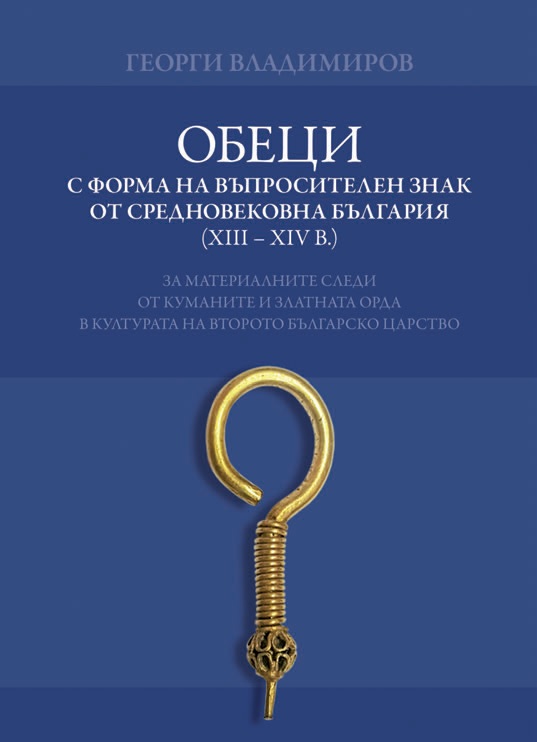Review of the book by Georgy Vladimirov «Earrings in the form of a question mark from medieval Bulgaria (13th–14th centuries): about the material traces of the Cumans and the Golden Horde in the culture of the Second Bulgarian Kingdom» (Executive editors
DOI:
https://doi.org/10.52967/akz2022.2.16.155.160Keywords:
archaeology, earrings in the form of a question mark, Golden Horde, Balkans, medieval fashion, Middle Ages cultureAbstract
A review of a specialized catalogue work on the study of oriental influences in the culture of the Second Bulgarian Kingdom on the Danube in the high and late Middle Ages (12th–14th centuries). As the main example of these influences, earrings in the form of a question mark are considered – a very common category of nomad jewelry of the Golden Horde period of the Eurasian steppe belt. The author considers the hypotheses of their origin and distribution in the Middle Ages as a nomadic type of fashion that arose in the culture of the Asian peoples of the Kimak-Cuman circle and spread during their resettlement in the Balkans. In the chapter "The origin and distribution of earrings in the form of a question mark", the author made a brief analysis of the distribution of these jewelry in large regions – the Volga river region, Western, Central and Southern Kazakhstan, Transbaikalia, Tien Shan. The author suggested that it was the migration of late nomads that extended the fashion to earrings in the form of a question mark. The fashion for this type of jewelry, which has become widespread in the culture of the Golden Horde, has acquired a supranational character. The author of the peer-reviewed work hypothesized that in the 13th century the cultural and ethnic picture in medieval Bulgaria is "cumanized", and in the first half of the 14th century even "tatarized". He contrasts these processes with the previous hypothesis about the "Byzantine" influence in the Danube basin at the beginning of the 2nd millennium.
References
Atanasov, G. 2009. Dobrudzhanskoto despotstvo. Km politi-cheskata, stopanskata i kulturnata istoriya na Dobrudzha prez XIV vek (Dobrudzha despotism. On the Political, Economic and Cultural History of Dobrudzha in the 14th century). Veliko Trnovо: “Faber” Publ. (in Bolgarian).
Vladimirov, G. 2018. Sergi v vide znaka voprosa iz srednevekovoy Bolgarii (XIII–XIV vv.): o materialnykh sledakh kumanov i Zolotoy Ordy v kulture Vtorogo Bolgarskogo tsarstva (Earrings in the form of a question mark from medieval Bulgaria (13th–14th centuries): about the material traces of the Cumans and the Golden Horde in the culture of the Second Bulgarian Kingdom). Kazan: A.Kh. Khalikov Archaeology Institute (in Russian).
Ivanov, V., Kriger, V. 1988. Kurgany kypchakskogo vremeni na Yuzhnom Urale (XII–XIV vv.) (Burial mounds of the Kypchak period in the Southern Urals (12th–14th centuries)). Moscow: “Nauka” Publ. (in Russian).
Karimova, R. 2013. In: Arkheologiia Evraziiskikh Stepei (Archaeology of the Eurasian Steppes), 16 (in Russian).
Fedorov-Davydov, G. 1966. Kochevniki Vostochnoy Evropy pod vlastiyu zolotoordynskikh khanov. Arkheologicheskie pamyatniki (The nomads of Eastern Europe under the rule of the Golden Horde Khans. Archaeological sites). Moscow: Moscow University Publ. (in Russian).

Downloads
Published
How to Cite
Issue
Section
License
Copyright (c) 2022 Арман Ауганович Бисембаев

This work is licensed under a Creative Commons Attribution-NonCommercial 4.0 International License.






